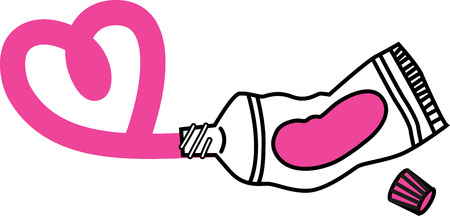Introduction: Why Proper Breast Milk Storage Matters
Every parent wants to give their baby the very best, and when it comes to feeding, breast milk is often at the top of that list. But once mom has pumped and stored that “liquid gold,” what happens next can make a big difference in your child’s health. Storing breast milk properly isn’t just about convenience; it’s about protecting vital nutrients, preventing harmful bacteria growth, and making sure your baby gets safe, high-quality milk every time. Dads often worry about whether the milk is still good after being in the fridge for a couple days, or if it’s okay to reheat milk that was left out during a 2 a.m. feeding emergency. Real life throws us curveballs—like forgetting a bottle on the counter or mixing up dates on storage bags—but knowing the science behind breast milk storage helps us make smart choices for our little ones. In this article, we’ll break down the best practices based on research and real-world experience so you can feel confident every time you prep a bottle.
2. The Science of Breast Milk: What Makes It Unique?
When it comes to feeding our babies, breast milk stands out as a nutritional powerhouse that formula just can’t fully replicate. Breast milk is not only packed with the perfect balance of proteins, fats, carbohydrates, vitamins, and minerals, but it also contains living cells and immune-boosting components that help protect your baby from illness. Unlike formula, which has a fixed composition, breast milk adapts to your baby’s age and needs—even changing during a single feeding or throughout the day. This dynamic quality makes proper storage even more important because handling can impact these beneficial properties.
Nutritional and Immunological Components
| Component | Breast Milk | Formula |
|---|---|---|
| Proteins | Easy-to-digest whey & casein; tailored for baby’s growth | Cow’s milk or soy-based proteins; less digestible |
| Fats | DHA, ARA, enzymes for brain/eye development | Added oils; lacks certain natural enzymes |
| Carbohydrates | Lactose plus unique oligosaccharides that feed healthy gut bacteria | Lactose or corn syrup solids; fewer prebiotics |
| Immunity Boosters | Antibodies (IgA), white blood cells, lysozyme, lactoferrin | No live immune components |
| Vitamins/Minerals | Easily absorbed forms tailored by mom’s diet and baby’s age | Added in standard amounts; less bioavailable |
The Changing Properties of Breast Milk
Breast milk is not static—it evolves from colostrum in the first days (rich in antibodies and protein) to mature milk weeks later (higher in fat and calories). Even within a single feeding session, foremilk quenches thirst while hindmilk delivers more fat for energy and growth. Factors like the time of day, mom’s health, and even if your baby was born preterm influence its makeup. All these changes mean that how you store and handle breast milk matters—exposure to heat or improper storage can reduce its immune factors and change its nutritional profile.
Why Handling Matters for Storage
The living components in breast milk are sensitive to temperature changes and contamination. For example, freezing may reduce some immune factors but keeps the nutrition intact for months—while leaving milk at room temperature too long can lead to bacterial growth. Using clean containers and following storage guidelines helps preserve what makes breast milk so special, ensuring your baby gets all the benefits nature intended.

3. Rules of the Fridge and Freezer: How Long Can You Store Breast Milk?
When it comes to storing breast milk, knowing the right storage times is crucial for keeping your baby safe and healthy. As a dad who’s handled his fair share of late-night feedings, let me break down the best practices—just like most American dads do at home—using clear guidelines based on CDC recommendations.
At Room Temperature
If you just pumped and need a quick solution, breast milk can stay at room temperature (up to 77°F or 25°C) for about 4 hours. That means if you’re prepping for a night feeding or heading out with the family, you don’t need to rush straight to the fridge—but don’t leave it out longer than that.
In the Fridge
The fridge is your best friend for short-term storage. According to the CDC, freshly expressed milk can last up to 4 days in the refrigerator (at or below 40°F/4°C). Most dads I know set aside a specific shelf just for baby bottles—keeps things organized and safe from any accidental spills or food contamination.
In the Freezer
For longer storage, freezing is the way to go. The CDC suggests breast milk can be stored:
- Up to 6 months is best
- Up to 12 months is acceptable
Just remember: always use airtight containers or breast milk storage bags, label everything with the date, and keep the milk toward the back of the freezer where temperatures are most consistent. Most American dads make it a habit to rotate older milk forward so nothing gets forgotten.
Bonus Dad Tip
If you thaw frozen milk in the fridge, use it within 24 hours. And once your baby starts drinking from a bottle, any leftover milk should be used within 2 hours—better safe than sorry!
Summary
Storing breast milk safely isn’t rocket science, but following these guidelines will help keep your little one healthy—and give every dad peace of mind at feeding time.
4. Best Containers and Labeling: Making Dad’s Life Easier
When it comes to storing breast milk, the right containers and a simple labeling system are game changers—especially for dads who want to help out during those late-night feedings. Let’s break down what really matters when choosing containers and how you can set up a dad-proof labeling system that actually works in the middle of the night.
Choosing Safe, Dad-Friendly Storage Containers
First things first: safety is non-negotiable. You want to use containers that keep milk fresh, are easy to handle, and won’t leak when you’re half-asleep at 2 a.m. Here’s a quick comparison:
| Container Type | Pros | Cons |
|---|---|---|
| BPA-free plastic bottles | Reusable, sturdy, easy to clean | Takes up more space; must check for BPA-free label |
| Breast milk storage bags | Space-saving, pre-sterilized, easy to label | Single-use, can be prone to leaks if overfilled or not sealed properly |
| Glass bottles | No chemical leaching, reusable, dishwasher safe | Heavier, can break if dropped (dad warning!) |
Dad Tip:
If your baby goes to daycare or you’re prepping a lot of bottles at once, consider using stackable storage trays or bins in the freezer. It keeps everything organized and easy to grab—no digging required.
Smart Labeling Hacks for Easy Grabs and Midnight Feeds
A clear labeling system means no more guessing games about which bag is oldest or how much is inside. Try these dad-approved strategies:
- Date + Time: Always write the date and time pumped on every bag or bottle with a waterproof marker.
- Name (if needed): If milk is going to daycare or multiple babies are involved, add your child’s name.
- Volume: Jot down the amount in ounces or milliliters—it’ll save you from measuring when you’re bleary-eyed.
- Color-coded stickers: Use different colored stickers for AM/PM pumping sessions or by day of the week for quick sorting.
- First-In-First-Out (FIFO) System: Store new milk behind older milk so you always use the oldest first. A simple bin labeled “Use First” can help keep everyone on track.
Dad Hack:
Create a cheat sheet on the fridge door showing how long milk lasts in the fridge/freezer. That way, anyone helping out has zero excuses for mixing up dates!
5. Thawing, Heating, and Serving: Keeping Breast Milk Safe
When it’s time to use stored breast milk, how you thaw and heat it matters—a lot. Done right, you’ll keep the nutrition and protect your baby from any harmful bacteria. Let’s break down the best practices for thawing, warming, and serving breast milk, based on both science and what works in real-life American homes.
Thawing Frozen Breast Milk: Patience Pays Off
The safest way to thaw frozen breast milk is in the refrigerator overnight. This slow method keeps the milk at a safe temperature (below 40°F) and preserves its nutrients. If you need it faster, you can hold the sealed container under warm (not hot) running water or place it in a bowl of warm water. Never thaw at room temperature—that’s a recipe for bacterial growth.
What NOT to Do: The Microwave Myth
Microwaving breast milk is a big no-go. Microwaves heat unevenly, which can create dangerous hot spots that might burn your baby’s mouth. Plus, high heat can destroy some of the precious immune factors and vitamins in your milk. It might be tempting for speed, but stick with safer methods.
Warming Up Stored Milk: Gentle Does It
Once thawed (or if you’re starting with refrigerated milk), warm the bottle by placing it in a bowl of warm—not boiling—water for a few minutes. Swirl gently to mix the cream back in; don’t shake vigorously, as that can break down some beneficial proteins. Test the temperature by squirting a few drops on your wrist—the milk should feel lukewarm, not hot.
Safe Serving Tips: What Every Dad Should Know
- Use within two hours: Once warmed or brought to room temp, serve it within two hours for best safety.
- No refreezing: Never refreeze thawed breast milk—it’s not safe.
- Avoid reheating: Don’t rewarm leftover milk from a previous feeding; toss what your baby doesn’t finish.
With these tips, you’ll keep every ounce as nutritious—and safe—as possible for your little one. You’ve got this!
6. Troubleshooting & Real-World Scenarios
Let’s be honest—breast milk storage doesn’t always go as smoothly as the parenting books say. As a dad who’s fumbled his share of bottles and bags, I’ve learned that a little troubleshooting can save a lot of stress. Here are some practical solutions for common issues, sprinkled with real-life dad moments and advice.
What to Do When You Find a Mystery Bottle
You’re cleaning out the fridge and find a bottle in the back. Cue the “Is this still good?” panic. Here’s what you do: Give it the sniff test—if it smells sour or off, toss it. Breast milk can separate naturally, so swirl (don’t shake) to mix it; if it won’t blend or has clumps, play it safe and discard. Labeling your containers with dates really helps avoid these mystery moments in the first place.
Dealing With Leaks and Spills
If you’ve ever opened the freezer only to find a bag of breast milk has sprung a leak, welcome to the club! To minimize disasters, use double-bagging for extra protection or invest in quality storage bags designed for freezing. Always leave room at the top of the bag for expansion—milk expands when frozen! And if you spill some? Don’t beat yourself up. Every parent has lost precious ounces. Wipe up, laugh it off, and remember: next time, slow down and double-check those seals.
Funny Dad Moments: Oops!
I once poured thawed milk into my coffee by mistake (don’t recommend). Another time, I packed a bottle for daycare but forgot to screw on the lid tightly—let’s just say my diaper bag was never the same. It happens! The key is to learn from these moments and keep a sense of humor about it all.
Quick Fixes for Storage Snafus
- If you’re unsure about storage time, print out a simple chart and stick it on your fridge for easy reference.
- Keep a permanent marker handy to label every bag or bottle before storing.
- If your freezer is packed tight, dedicate one area just for milk so nothing gets lost in the shuffle.
At the end of the day, handling breast milk storage mishaps is part science and part survival skills—just remember you’re doing your best, and a little preparation goes a long way!
7. Conclusion: Supporting Your Partner and Baby
Mastering breast milk storage is more than just following the rules—its about teamwork, trust, and making sure both your partner and baby feel supported every step of the way. As a dad, you play a hands-on role in this journey. Whether youre labeling bags at 2 a.m., warming bottles while your partner rests, or simply giving her a high five for another successful pumping session, every action counts. Remember, handling breast milk properly means your baby gets safe, nutritious meals even when mom isnt available. This is your chance to step up and be part of the feeding routine, building confidence as a dad and strengthening your family bond. So keep communicating, stay organized with storage, and celebrate the wins together—youve got this, and your involvement makes all the difference.


